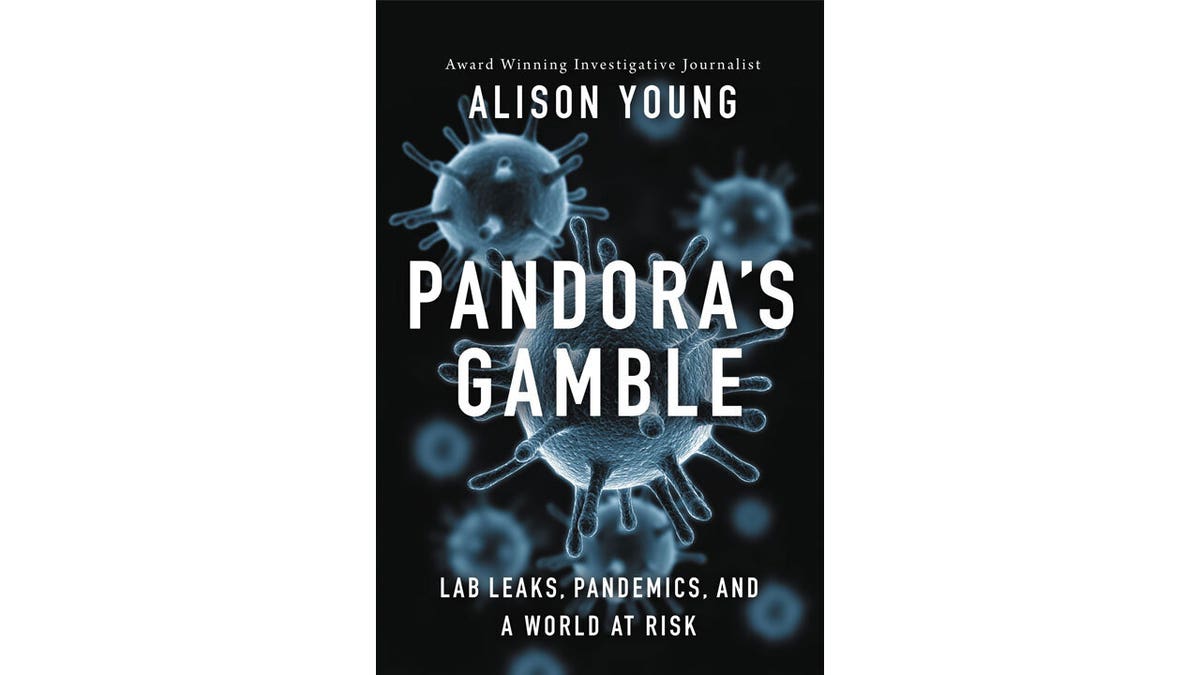Award-winning science reporter says media ‘never’ should have dismissed COVID lab leak theory
‘Lab accidents aren’t rare,’ Alison Young told Fox News Digital.
America’s legacy media suffered a credibility crisis by prematurely dismissing the COVID lab leak theory from the onset of the pandemic and a new book puts a spotlight on why so many people wanted to shut down the notion altogether.
"The question of whether the COVID-19 pandemic came from a lab accident should never, ever have been dismissed as a conspiracy theory," award-winning science reporter Alison Young told Fox News Digital.
Young is the author of a new book, "Pandora’s Gamble," which aims to reveal the troubling history of laboratory accidents and "extraordinary efforts" that have been taken to keep those accidents secret. She focuses on government officials in China and leading science experts around the globe who insisted COVID couldn’t have come from the Wuhan Institute of Virology, which many in the mainstream media took hook, line and sinker.
"I have been reporting on laboratory accidents primarily here in the United States for most of the past 15 years as a reporter for the newspaper in Atlanta, USA Today. And I've also done some work for ProPublica," Young said. "What I found in all of those years is that lab accidents aren’t rare. What's rare about lab accidents is that the public rarely hears about them."

"Pandoras Gamble: Lab Leaks, Pandemics, and a World at Risk" is available now.
Reporters and pundits from news organizations including CNN, MSNBC, CBS News, The New York Times and Washington Post dismissed the COVID lab leak theory from the jump, labeling it "fringe" or conspiratorial at best. At the time, nonpartisan onlookers suggested the theory was being dismissed because it was favored by then-President Trump.
But earlier this year, the theory that COVID originated from a lab leak at the Wuhan Institute of Virology was embraced by FBI Director Christopher Wray and the U.S. Energy Department, a sentiment expressed by top Trump administration officials nearly from the outset despite pushback from the press.
Former Director of National Intelligence John Ratcliffe has since said the "only explanation" and "plausible assessment" for the COVID-19 pandemic is a leak from the Chinese Communist Party-controlled lab, citing U.S. intelligence and "numerous, diverse and unassailable" sources for the information. Evidence also pointed to the lab leak theory in a Senate report.
Young believes questions about the origins of the worldwide pandemic became too tangled with politics, and feels many science reporters are not used to covering such politicized topics. They were spoonfed talking points from Chinese officials and members of the science community who didn’t want the Wuhan lab taking blame for the significant death toll.
"I think one of the things that the news media has not done as well is to really look at the larger questions beyond just the scientific questions," Young said.
"Science is a part of the investigations of the origins of COVID, but it is also a question of forensics. It's a question of looking at what was going on in these facilities and some of the paper trails," she added. "That's something that is a different discipline. That's a national security, that's a forensics investigation. That's not necessarily strictly a science journalism question."
During the early months of the pandemic, New York Times reporter Maggie Haberman suggested the theory was political because Trump didn’t share any evidence that COVID began in a lab. Then-CNN correspondent John Harwood suggested the theory was a way for Trump to "deflect blame" from his job performance, MSNBC’s Joy Reid called it "debunked bunkum," and Nicolle Wallace, notorious for her over-the-top sycophancy for the Democratic Party, labeled it one of Trump’s "conspiracy theories."
The Washington Post reported Sen. Tom Cotton, R-Ark., "repeated a fringe theory suggesting that the ongoing spread of a coronavirus is connected to research in the disease-ravaged epicenter of Wuhan, China." These are just a few of the countless examples of media members completely dismissing the notion that COVID could have leaked from a lab – but Young doesn’t think a specific news organization is to blame. Rather, she feels, the industry at large failed.
"I think that there's plenty of blame to go around on the dismissal of the lab accident hypothesis," she said, noting that some publications, such as The Washington Post, have issued embarrassing editor’s notes or corrections.
How the virus began is still up for debate, but critics say the media sin was to dispel a plausible theory from the start. Many scientists, including Dr. Anthony Fauci, still favor the natural or "zoonotic" origin theory of the disease.
"Even today, more than three years after all of this began, we still don't have firm evidence as to where the COVID-19 pandemic began, and it's for a variety of reasons," Young said. "It's from China's refusal to cooperate… and it's also the lack of our own looking here in the United States and around the world."
One example of reporters failing to chase down the lab-leak story seemed to have occurred at CNN, where an insider previously told Fox News Digital that then-CNN chief Jeff Zucker would not allow his network to pursue the story because he believed it was a "Trump talking point."
"It is kind of crazy that we didn't chase it harder," the insider told Fox News Digital earlier this year.
As CNN and other news organizations were reluctant to investigate the lab leak theory, many of the reporters who attempted to chase it down were hit with backlash from Big Tech. One of those reporters was Young herself.
"Early on in the pandemic, I did some reporting about lab accidents at one of the labs here in the United States that was focused on coronavirus research and showing how lab accidents occur even in the United States in these coronavirus labs," she said. "Some of my own reporting was… getting flagged on Facebook as something that was problematic reporting."
Young, who is now the Curtis B. Hurley Chair in Public Affairs Reporting at the Missouri School of Journalism, feels there was "too much skepticism" from the media when it came to the lab leak theory.
"Some of it is politics and some of it is just simply that you had such vocal pushback from scientists that this was not something that was a legitimate theory," Young said, adding that "Pandora's Gamble" details alarming reasons why the public was being told the lab leak hypothesis was a conspiracy theory in the first place.
"One of the things I think that is concerning is that while the public was being told that this lab accident hypothesis was a conspiracy theory, some of the most prominent scientists in the world behind the scenes were taking it very seriously," she said.
"They were writing emails to the leadership of the Wuhan Institute of Virology, talking with them about how they should be investigating to make sure that this didn't come from their lab. There were high-profile meetings organized by the National Institutes of Health that brought together a number of scientists who initially were expressing concerns that this virus had possibly been engineered. So those kinds of things were going on behind the scenes," Young said. "But simultaneously, the public was being told this was a conspiracy theory."
"Pandora’s Gamble" is available now where books are sold.
Fox News’ Joseph A. Wulfsohn, Brooke Singman and David Rutz contributed to this report.




